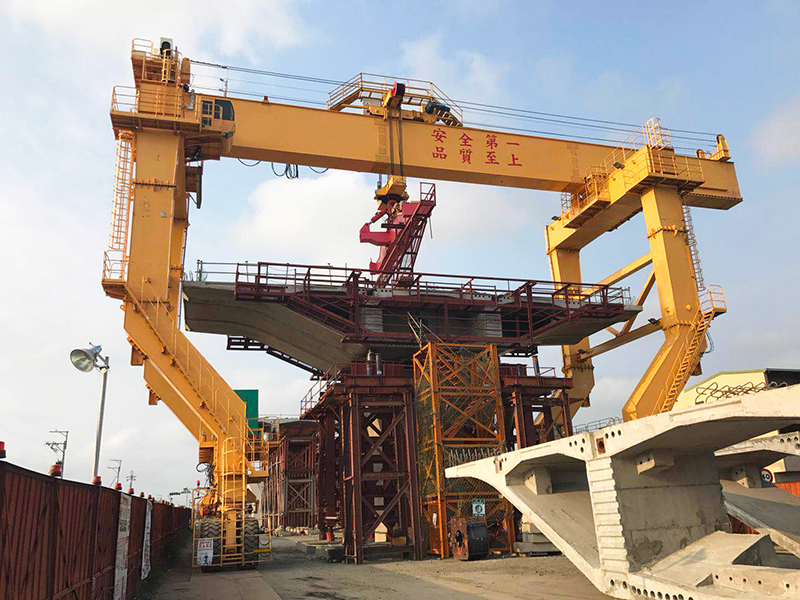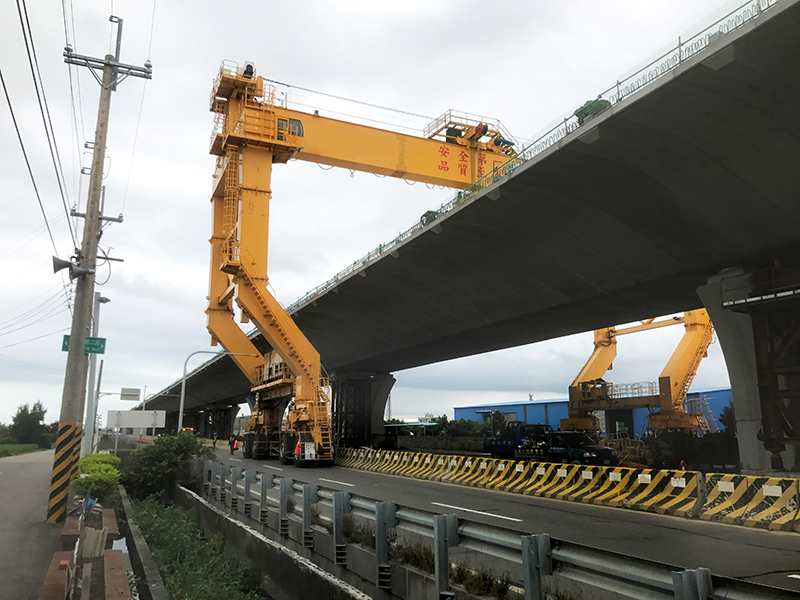Bridges, marvels of engineering that connect distant lands and foster economic growth, stand as iconic symbols of human ingenuity. Behind the grandeur of these structures lies a critical player in their creation: the crane. Cranes, with their towering frames and impressive lifting capabilities, play a pivotal role in the construction of bridges, contributing to the success of projects that span rivers, canyons, and urban landscapes. In this article, we explore the significance of cranes in bridge construction and the multifaceted roles they play in shaping the infrastructure that links societies.

1. Lifting the Load: Precision and Power
At the heart of the crane’s significance in bridge construction is its unparalleled ability to lift and position heavy loads with precision. From steel beams to concrete segments, cranes are the workhorses that elevate the essential components of a bridge into place. This lifting capacity allows construction teams to seamlessly integrate large and cumbersome elements, facilitating the assembly of bridge structures with efficiency and accuracy.
2. Efficiency in Construction: Accelerating Timelines
The use of cranes in bridge construction dramatically accelerates project timelines. The alternative—relying solely on manual labor or less specialized machinery—would not only be impractical but would also extend construction durations significantly. Cranes, with their speed and power, ensure that bridge projects progress at a pace that aligns with the demands of modern infrastructure development.
3. Versatility in Design: Adapting to Varied Structures
Bridges come in diverse shapes and sizes, each presenting unique challenges in construction. Cranes, designed for versatility, can adapt to the specific needs of different bridge designs. Whether it’s a suspension bridge spanning vast expanses or a compact pedestrian bridge in an urban setting, cranes can be tailored to the demands of the structure, making them indispensable in the construction process.
4. Enhanced Safety: Reducing Human Risk
Human safety is a paramount concern in any construction project, and the use of cranes contributes significantly to this aspect. By automating the lifting and placement of heavy materials, cranes reduce the need for extensive manual labor in precarious positions. This not only enhances overall safety on the construction site but also minimizes the risk of accidents and injuries associated with heavy lifting.
5. Precision Placement: Ensuring Structural Integrity
The precise placement of bridge components is critical to ensuring the structural integrity of the finished bridge. Cranes, equipped with sophisticated control systems and skilled operators, can position elements with millimeter accuracy. This precision is particularly vital in the assembly of complex bridge structures, where even slight misalignments could compromise the overall stability and functionality of the bridge.

6. Handling Varied Materials: Steel, Concrete, and Beyond
Bridges often incorporate a combination of materials, including steel and concrete, to meet structural requirements. Straddle carrier cranes are designed to handle a diverse range of materials, from lifting steel beams to placing precast concrete segments. This versatility allows construction teams to seamlessly integrate different components, optimizing the use of materials for maximum structural strength.
7. Accessibility in Challenging Terrains: Overcoming Natural Barriers
Many bridges are constructed in challenging terrains, including over rivers, valleys, or in mountainous regions. Cranes, especially crawler cranes and floating cranes, offer the mobility required to access and work in these difficult environments. They provide the means to transport materials and equipment to construction sites that would otherwise be inaccessible.
8. Adapting to Urban Constraints: Minimizing Disruption
In urban settings, where space is often limited and neighboring structures must be considered, the versatility of cranes becomes even more crucial. Tower cranes, which can be erected vertically and have a smaller footprint, allow for efficient construction in tight spaces. This adaptability minimizes disruption to the surrounding environment and facilitates the construction of bridges in densely populated areas.
9. Economic Impact: Fostering Growth and Connectivity
The significance of cranes in bridge construction extends beyond the construction site. Bridges are economic lifelines, connecting regions and fostering trade and commerce. The efficiency brought about by cranes translates into cost savings and quicker project delivery, ultimately contributing to the economic growth of the connected regions.
10. Innovation in Crane Technology: Shaping the Future of Construction
As technology advances, so does the capability of cranes in bridge construction. Innovations in straddle carrier design, automation, and remote operation are shaping the future of construction. The integration of sensors, real-time monitoring, and advanced control systems enhances the safety, efficiency, and precision of crane operations, further solidifying their role in the evolution of bridge construction.
In conclusion, cranes are not merely machines in the construction process; they are the backbone of bridge development, lifting the foundations of connectivity and progress. Their significance lies not only in their ability to hoist heavy loads but also in their adaptability to diverse designs, their contribution to enhanced safety, and their role in accelerating the realization of vital infrastructure. As bridges continue to span the gaps between nations, cities, and communities, the importance of cranes in their construction remains an enduring testament to the synergy between engineering prowess and technological innovation.
